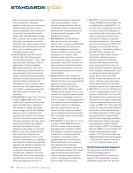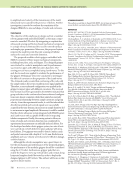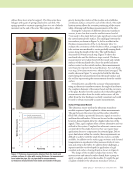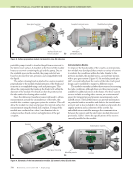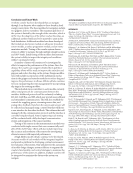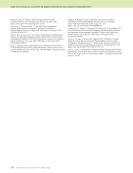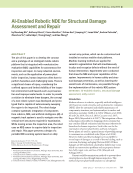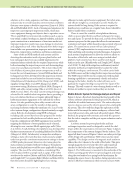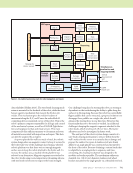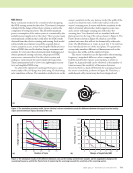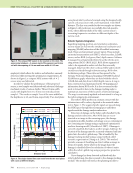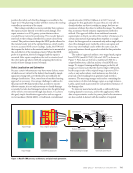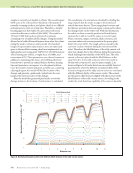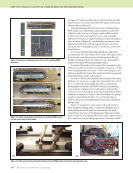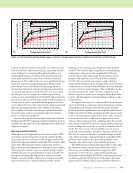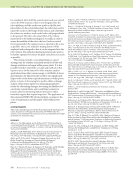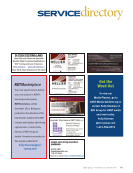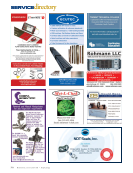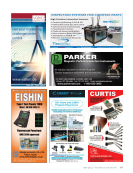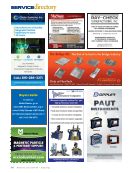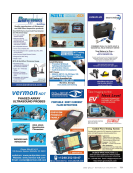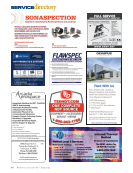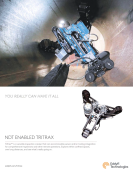706 M A T E R I A L S E V A L U A T I O N • J U L Y 2 0 2 1 B30.18 includes provisions that apply to the construction, installation, operation, inspection, and maintenance of hand-powered and power-driven overhead and gantry cranes that have a top or under running multiple girder bridge with a vertically guided carriage, with or without a top or under running trolley. The requirements included in this volume also apply to stacker cranes having the same fundamental character- istics, such as cantilever gantry and semi-gantry stacker cranes. l BSR/API Standard 662, Part 1-2011 (R202x), Plate Heat Exchangers for General Refinery Services – Part 1: Plate and Frame Heat. Exchangers. This is a reaffirmation of national adoption ANSI/API Standard 662, Part 1-2011. This standard gives requirements and recommendations for the mechanical design, materials selection, fabrication, inspection, testing, and preparation for shipment of plate-and-frame heat exchangers for use in petroleum, petro- chemical, and natural gas industries. It is applicable to gasketed, semiwelded and welded plate, and frame heat exchangers. l BSR/ASME B30.9-202x, Slings. This is a revision of ANSI/ASME B30.9-2018. Volume B30.9 includes provisions that apply to the fabrication, attachment, use, inspection, testing, and mainte- nance of slings used for load-handling purposes, used in conjunction with equipment described in other volumes of the B30 Standard. Slings fabricated from alloy steel chain, wire rope, metal mesh, synthetic fiber rope, synthetic webbing, and polyester and high- performance fiber yarns are addressed. l BSR/ICC 1205-202x, Standard for Off- Site Construction: Inspection and Regulatory Compliance. This is a new standard. Development of a comprehen- sive standard to address the inspection, approval, and regulatory compliance of off-site residential and commercial construction components and their assembly and completion at the final building site. This includes permitting in-plant and on-site final inspections third-party inspections the role of industrialized building departments, state modular programs, and the authority having jurisdiction. Off-site construction includes componentized, panelized, and modularized elements. This standard will not apply to HUD Manufactured Housing. l BSR/ASME BPVC Section VIII-202x, Rules for Construction of Pressure Vessels. This is a revision of ANSI/ASME BPVC Section VIII-2019. This section contains mandatory requirements, specific prohibitions, and nonmanda- tory guidance for pressure vessel materials, design, fabrication, examina- tion, inspection, testing, certification, and pressure relief. The code does not address all aspects of these activities, and those aspects that are not specifi- cally addressed should not be consid- ered prohibited. l BSR/ASTM E2555-202x, Practice for Factors and Procedures for Applying the MIL-STD-105 Plans in Life and Reliability Inspection. This is a revision of ANSI/ASTM E2555-2012 (R2018). l BSR/AWS D11.2/D11.2M-202x, Guide for Welding Iron Castings. This is a new standard. This standard presents briefly the history and metallurgy of cast iron and the welding processes applicable to it. A newly developed weldability test is described in detail and instructions given for its application in specific cases. Provision is made for qualifica- tion of welding procedures and welders when necessary quality control practice is also included. l BSR/ASME B30.7-202x, Winches. This is a revision of ANSI/ASME B30.7-2016. The B30.7 volume includes provisions that apply to the construction, installa- tion, operation, inspection, testing, and maintenance of winches arranged for mounting on a foundation or other supporting structure for moving loads. Winches addressed in this volume are those typically used in industrial, construction, and maritime applications. The requirements included in this volume apply to winches that are powered by internal combustion engines, electric motors, compressed air, or hydraulics, and that utilize drums and rope. l BSR/TAPPI T 529 om-2014 (R202x), Surface pH Measurement of Paper. This is a reaffirmation of ANSI/TAPPI T 529 om-2014. This nondestructive test may be used to measure the hydrogen ion concentration (pH) on the surface of the paper in books and documents that constitute the collections of libraries and government archives. This method serves as an alternative to TAPPI T 509, Hydrogen Ion Concentration (pH) of Paper Extracts – Cold Extraction Method, and TAPPI T 435, Hydrogen Ion Concentration (pH) of Paper Extracts – Hot Extraction Method, because it avoids the destruction of printed material in the determination of the permanence expected for paper. pH values obtained through the application of this method to sized materials, such as writing and printing and industrial papers, reflect only the pH of the surface of these materials and should not be construed as pH values which may be determined by the cold-water extraction method of the same material. l BSR/TAPPI T 437 om-2012 (R202x), Dirt in Paper and Paperboard. This is a reaf- firmation of ANSI/TAPPI T 437 om-2012. This method (1-3) is suited for the visual estimation of dirt in paper or paperboard in terms of equivalent black area. For dirt in pulp, see TAPPI T 213, Dirt in Pulp. This method is a visual inspection method for the evaluation of the equivalent black area (EBA) measurement of dirt in paper and paperboard. An equivalent instru- mental method using image analysis for the measurement of dirt in pulp, paper, and paperboard in units of parts per million is given in TAPPI T 563, Equivalent Black Area (EBA) and count of visible dirt in paper and paperboard by image analysis. T 537, Dirt Count in Paper and Paperboard (Optical Character Recognition – OCR) reports the number of specks of 0.02 mm2 or larger per square meter. ISO Draft International Standards The following are standards that the International Organization for Standardization (ISO) is considering for approval. The proposals have received substantial support within the technical STANDARDS update
J U L Y 2 0 2 1 • M A T E R I A L S E V A L U A T I O N 707 committee that developed them and are now being circulated to ISO members for comment and vote. Readers interested in reviewing or commenting on these standards should order copies from ANSI. l ISO/DIS 10360-11, Geometrical product specifications (GPS) – Acceptance and reverification tests for coordinate measuring systems (CMS) – Part 11: CMSs using the principle of X-ray computed tomography (CT) l ISO/DIS 23876, Gas cylinders – Cylinders and tubes of composite construction – Acoustic emission examination (AT) for periodic inspection and testing l ISO/DIS 10303-243, Industrial automa- tion systems and integration – Product data representation and exchange – Part 243: Application protocol: For modelling and simulation information in a collaborative systems engineering context (MoSSEC) l ISO/DIS 23703, Microbeam analysis – Guideline for misorientation analysis to assess mechanical damage of austenitic stainless steel by electron backscatter diffraction (EBSD) l ISO/DIS 14246, Gas cylinders – Cylinder valves – Manufacturing tests and examinations l ISO/DIS 13338, Gas cylinders – Gases and gas mixtures – Determination of corrosiveness for the selection of cylinder valve outlet l ISO/DIS 22434, Gas cylinders – Inspection and maintenance of valves l ISO/DIS 17636-1, Non-destructive testing of welds – Radiographic testing – Part 1: X- and gamma-ray techniques with film l ISO/DIS 12005, Lasers and laser-related equipment – Test methods for laser beam parameters – Polarization l ISO/DIS 17636-2, Non-destructive testing of welds – Radiographic testing – Part 2: X- and gamma-ray techniques with digital detectors l ISO/DIS 17842-3, Safety of amusement rides and amusement devices – Part 3: Requirements for inspection during design, manufacture, operation and use l ISO/DIS 14246, Gas cylinders – Cylinder valves – Manufacturing tests and examinations l ISO/DIS 13338, Gas cylinders – Gases and gas mixtures – Determination of corrosiveness for the selection of cylinder valve outlet l ISO/DIS 22434, Gas cylinders – Inspection and maintenance of valves l ISO/DIS 17636-1, Non-destructive testing of welds – Radiographic testing – Part 1: X- and gamma-ray techniques with film w
ASNT grants non-exclusive, non-transferable license of this material to . All rights reserved. © ASNT 2025. To report unauthorized use, contact: customersupport@asnt.org



























































